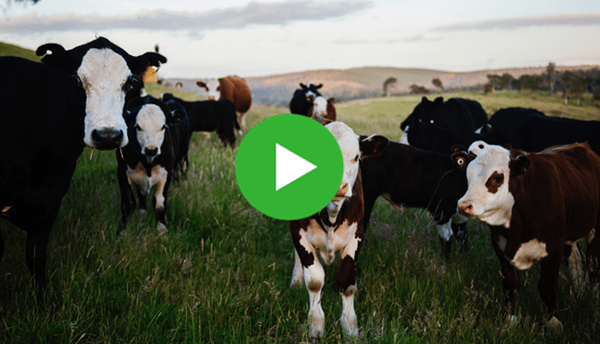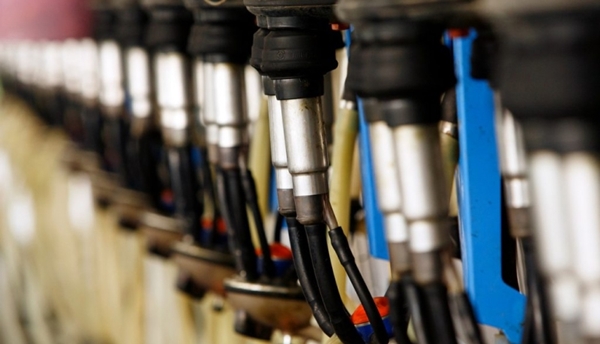

NEWS
Salmonella vaccination a vital investment for Co. Waterford farmer
12th September 2022
TAGS
Salmonella is a significant disease on Irish dairy farms and can greatly impact on herd productivity and profitability. The implications include high abortion rates, high calf mortality, reduced growth rates and depressed fertility in animals that do overcome the infection. It is also a zoonotic disease, which means it can be transferred easily from animals to humans.
Tom Power, Dairy Farmer, Waterford
One farmer who doesn’t take any risks when it comes to Salmonella is Waterford farmer, Tom Power. Farming in Drumhills, Dungarvan, Co. Waterford, Tom is milking a herd of 300 cows in a spring-calving system.
In the video below, Tom outlines the importance of Salmonella control on his farm and why vaccinating with Bovilis® Bovivac® S has become a critical component of his herd management programme.
“The herd is at a size now, where we can’t take any chances with their health and that’s why we vaccinate against Salmonella. Like most farmers do, we put a huge amount of time and effort into getting the cows into calf, so keeping them in calf is our number one priority,” says Tom.
No farm is risk free
According to Tom’s local Veterinary Practitioner, Declan Gilchrist from Deise Vets in Dungarvan, Co. Waterford, “no farm is risk free. Just because you haven’t had Salmonella on your farm before, doesn’t mean you are protected from it.”
Vaccination against Salmonella
Currently in Ireland, Bovilis® Bovivac® S is the only vaccine available for the control of salmonellosis in cattle. Healthy calves from approximately three weeks of age can receive the primary vaccination course of two 2ml injections separated by an interval of 14 to 21 days.

Calves over six months of age and adult cattle should receive two 5ml injections 21 days apart. All cattle vaccinated with the primary vaccination course of Bovilis® Bovivac® S should receive a 5ml injection at least two weeks prior to each period of risk or at intervals of no more than 12 months thereafter.
Tom concludes: “We try to give each animal a chance and by vaccinating against Salmonella every year, we are reducing the risk of illness and ensuring the cow’s health and performance is not impacted. As it is a zoonotic disease, vaccination also possibly lowers the risk to anyone working here on the farm.”
Reasons to control Salmonella
There are two strains of Salmonella to be aware of for your herd. Salmonella dublin (S dublin) is the most common type associated with abortion in cattle in Ireland and has a high carrier status. Salmonella typhimurium is more commonly associated with diarrhoea outbreaks but can be a cause of abortions.
As well as causing abortions, clinical signs can vary from very mild diarrhoea to those which show obvious signs of fever, dehydration, and profuse diarrhoea, followed by death in a few days.

Clinical outbreaks in young calves can often resemble pneumonia. Acute infections can become chronic and may result in poor thrive, chronic diarrhoea, and terminal dry gangrene.
Salmonella is a significant disease on Irish dairy farms. It can survive for up to two years in the right conditions and the disease is shed mostly in faeces.
In many cases, cows that are infected with Salmonella will often appear clinically normal and Salmonella can survive for up to two years in the right conditions and the disease is shed mostly in faeces.
In many cases, cows that are infected with Salmonella will often appear clinically normal and healthy. It is common when these animals become stressed that they begin shedding the bacteria, infecting other cows, or getting sick themselves.
Hygiene and biosecurity to control Salmonella
Vaccination is critical; however, to maximise animal immunity and minimise exposure, it must coincide with the strict management measures outlined below.
- Maintain a closed herd.
- If buying in, quarantine arrivals for a period of four weeks minimum.
- Strict biosecurity should be particularly maintained around cases.
- Faecal material from clinical cases must not enter the slurry tank.
- A disinfection point should be in place for everyone who enters and leaves the farm to use.
- A rodent and bird control plan should be in place, especially regarding access to feed stores.
- Hygiene of buildings between batches of animals is also critical.
For more information about controlling Bovine Salmonellosis in your herd talk to your vet or visit Salmonella – Bovilis – MSD Animal Health
TAGS
Sign up to Bovilis® product and event information

MSD Animal Health
Red Oak North, South County Business Park, Leopardstown,
Dublin 18, Ireland
vet-support.ie@msd.com
PHONE
CATTLE DISEASES













